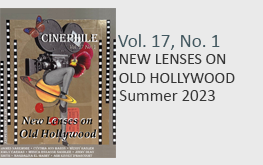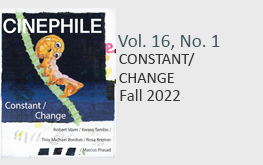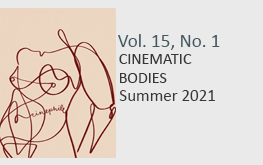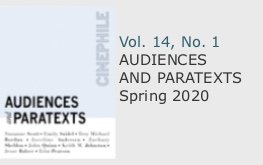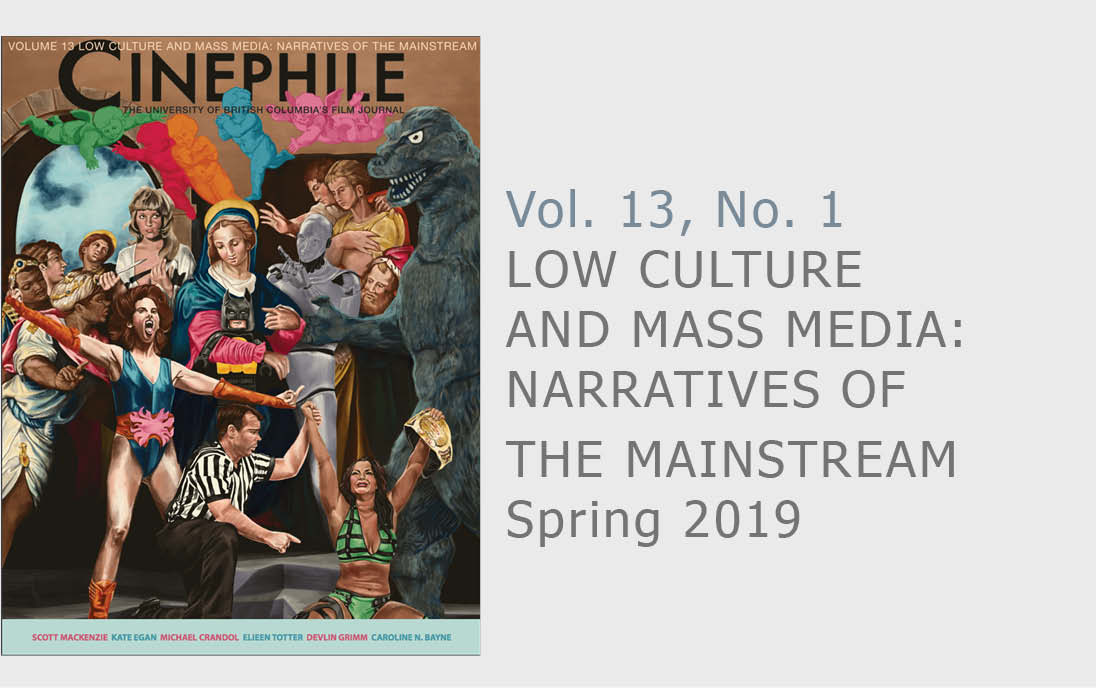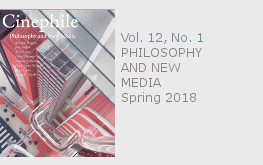Tia Wong
There is power in looking.
– bell hooks (197)
I don’t want to be an outside eye looking in.
– Alanis Obomsawin (qtd. in Steven 184)
In their manifesto, “Towards a Third Cinema,” Solanas and Gettino seek to revitalize cinema’s role in revolution and liberation. Third Cinema and its project of decolonization rely on an investment in the audience’s active spectatorship-one that does not merely observe; instead, through witnessing the truth of its oppression, the audience challenges (neo)colonialism and the colonial production of national histories. Solanas and Gettino’s model of Third Cinema applies not only to the ‘Third World’, but is also connected to and informs alternative world cinema. The concept of alternativity, however, may be more conducive to Solanas and Gettino’s goal of combating (neo)colonialism because it signals a less marginalizing framework for discussing ‘Third World’ films. Indeed, the discourse of marginality that circulates through the use of the term ‘Third World’ may be applied unintentionally to discourses on Third Cinema. Thus, although it is productive to examine Solanas and Gettino’s model of Third Cinema, it is also necessary to move toward theories of alternativity in order to trouble the limitations inherent in the concept of a ‘Third World’.
Third Cinema’s links to alternative world cinema foreground the ways in which national cinemas in countries such as Canada are categorized not only within national borders and by national specificity, but also within the larger cultural production and exchanges in a globalized market. As an alternative mode of filmmaking to mainstream, narrative films in the ‘First World’, Third Cinema’s aesthetics remap the political, economic, and cultural conditions of production, distribution, and exhibition of world cinemas. The aesthetic re-visioning of colonialism in Canadian filmmaker Alanis Obomsawin’s documentaries is just such an example of Third Cinema’s objectives being utilized in the ‘First World’. Solanas and Gettino’s vision of a revolutionary, combative, and decolonizing cinema that attacks the political and legal apparatuses of the dominant nation-state emerges throughout Obomsawin’s documentaries.
Obomsawin’s work grapples with and unsettles accepted notions of national history and belonging. In Incident at Restigouche (1984) and Kanehsatake: 270 Years of Resistance (1993), the “power in looking” (hooks 197) agitates the naturalized narration of Aboriginal history and disarms colonial representations of Aboriginal people. Restigouche presents the 1981 dispute between the Micmac Nation and the Quebec government and provincial police over the government’s violations of the Micmac Nation’s salmon-fishing rights. Kanehsatake documents the 1990 Mohawk Nation protest against a golf course development on their land in Oka, Quebec. By examining the filmmaker’s and spectator’s roles in Third Cinema, contextualizing this discussion within E. Ann Kaplan’s and bell hooks’ theories on the power in looking, and analyzing how the documentaries’ anti-colonial resistance makes visible Kaplan’s and hooks’ theories, I intend to argue how Obomsawin’s work, although produced within the ‘First World’, establishes alternative ways to view colonial narrations of national history.
Although the films emerge from cultural and political climates dissimilar from those of colonized ‘Third World’ nations, I locate my analysis of Restigouche and Kanehsatake within Third Cinema because Obomsawin shares in the desire combat a colonialist agenda and cultivate a spectator-actor-accomplice. In their manifesto, Solanas and Gettino highlight the limits of traditional forms of spectatorship: “Man is accepted only as a passive and consuming object; rather than having his ability to make history recognized, he is only permitted to read history, contemplate it, listen to it, and undergo it” (51). Obomsawin subverts this spectatorship by inviting the audience to re-read history. Moreover, the open form of Third Cinema is especially well-suited to First Nations filmmakers because there is a significant continuity between forms of oral tradition and ceremonial story-telling and the structures of reception of Third Cinema. This continuity consists of a sharing of responsibility in the construction of the text, where both the film-maker and the spectators play a double role as performers and creators (Gabriel 62). Thus, by utilizing cinema in the struggle against the vestiges of colonialism and neocolonialism, Solanas and Gettino’s revolutionary impulses converge with Obomsawin’s documentary practices despite temporal and geographical distances, as well as diverse cultural and political differences, arising between their works.
E. Ann Kaplan’s theories on the power in looking, similarly take up this interrogation of colonial discourse. For Kaplan, women filmmakers who “produc[e] new ways of seeing, new readings of the past, as well as new images of inter-racial looking relations” participate in the “healing [of] imperialized eyes” (219). She reads these filmmakers’ ambitions to re-present their histories as a response to the colonial images that were produced for and by the predominately white population. Kaplan’s assertion that “easing the pain of having had to endure the imperial gaze is most needed for those whose bodies were damaged by the camera” (222) illuminates the challenge that Obomsawin’s films accept. Restigouche and Kanehsatake destabilize the racist representations of Aboriginal people in order to recuperate their bodies and histories from the “imperial gaze” (222). Indeed, through a dialogue between the past and the present, Obomsawin’s documentaries reveal that “the openness of Third Cinema is primarily an openness towards history as a site of possible action” (Wayne 149).
bell hooks also evaluates history as a domain in which looking relations are formed, specifically through the discriminatory relations between the (white) colonizer and the colonized. hooks’ essay “The Oppositional Gaze: Black Female Spectators” addresses how the colonial repression of the act of looking exposes the “power in looking.” Although hooks analyzes black female spectators, her discussion of the relationship between colonized peoples and the power of the look is further applicable to Obomsawin’s work. For the colonized people, the power in looking facilitates their resistance to the hegemonic imaginary, foreclosing the capability and desire of the oppressed to be the “creator of ideology” (Solanas and Gettino 51). Similarly, Gittings’ discussion of Obomsawin’s work identifies it as “a site of resistance to the white colonizing gaze of the Québec state that sutures the viewer into an identification with the Micmac [and Mohawk] subject position[s] through interviews and subjective camera shots” (217). Gittings’ reading of Obomsawin’s films, which informs my own, gestures toward Solanas and Gettino’s demand that both audiences and filmmakers actively engage in the process of decolonization.
There are three distinct variations of the gaze in Restigouche and Kanehsatake that confer power onto the Micmacs and Mohawks and align the spectator with an anti-colonial and defiant Aboriginal viewpoint. In the first variation, which challenges normalized inter-racial looking relations, the Indigenous people adopt a confrontational gaze (Figure 1) toward the agents of the nation-state while the spectator occupies an Aboriginal perspective via the camera’s positioning. I call the second variation the covert gaze (Figure 2), which places the oppressed in the position to look secretly without being seen, to bear witness without having the look returned. Finally, I discuss the denied gaze (Figure 3) and how reactions to an inability to see serve to unmask the colonial ideology still inscribed within inter-racial looking.
The confrontational and inter-racial exchange of looks between First Nations people and their opponents in the two documentaries aims to reconceptualize colonial attitudes. In Restigouche, Obomsawin herself is the bearer of a confrontational gaze. After the Province of Quebec’s (PQ) Minister of Fisheries Lucien Lessard refers to the events of 1981 and the October Crisis in his discussion of the fishing agreement’s negotiations, the camera slowly pans right to explicitly frame Obomsawin for a significant duration of time-a rare onscreen appearance by the Abenaki filmmaker whose presence usually takes the form of voiceover. The camera and the audience’s gaze remain fixed on the filmmaker, yet this moment is unmediated by dialogue, as she offers no verbal response. Obomsawin’s appearance disrupts the visual and aural rhythm of the documentary, emphasizing the ways in which the attitudes of the racist nation-state are incongruous and insensitive to those of the First Nations. Indeed, the silence embodied by the absence of voiceover and dialogue allows Obomsawin’s accusatory gaze to penetrate the colonial discourse that Lessard and his parliamentary colleagues traffic throughout the crises featured in both films.

Figure 1
In Kanehsatake, the confrontational exchange of looks unravels the obscured links between the colonial ‘white man’s burden’ and present-day racism. In a documentary that uses mostly straight-on medium, medium-long, or long shots to frame dialogue scenes, the medium close-up shot of Aboriginal protester ‘Psycho’ and soldier Pierre Daigle, framed from a low angle, draws attention both to their gazes and to those of the spectators (Figure 1). The camera’s angle is meant to make the audience uncomfortably aware of its inferior position and rupture the privileged viewing position associated with the typical non-Aboriginal viewer. In this unusual sequence, Obomsawin deconstructs the spectator’s “imperialized eyes” (Kaplan 219) and reconstructs the colonial looking relations and images that dominated television news reports of the protest. Obomsawin’s camera, which may be taken to represent the inside eye of the Aboriginal people looking out at the hegemonic white world, not only demands that the spectator identify with the Aboriginal perspective, but also offers a counter-discourse of the dominant nation-state. If equality, fairness, and multiculturalism are synonymous with Canada, then the existence of a counter-discourse would position the nation-state as racist and intolerant. In Kanehsatake the sequences that enclose the Mohawk band members within a familial and communal space contradict the national news media’s use of “images that were anti-Indigenous or anti-warrior” as a “way of deflecting the world’s attention away from Canada’s oppressive policies and the intense racism demonstrated by the nightly rioters in Chateauguay and LaSalle towards the Kanienkehaka” (Goodleaf 67). The triangulation of the film(maker), the spectator, and the television media’s performance of the narrative of the colonial nation embodies the nation-state’s archaic and Eurocentric rhetoric as well as Solanas and Gettino’s realization that “the making of the film and the making of the revolution [are] inseparable” (MacBean 184).[1] For Solanas, Gettino, and Obomsawin, film production and exhibition are essential practices in the decolonization process.
Operating with an awareness that the “camera is the inexhaustible expropriator of image-weapons; the projector, a gun that can shoot 24 frames per second” (Solanas and Gettino 58), Obomsawin arms the audience with the images and information needed to assemble an attack on Canada’s political and legal systems. The opening shots of the golf course in Kanehsatake make visible the gulf between the Mohawks’ cultural and the state’s economic interests: The camera-and therefore the viewer-is not able to join the golfers, being physically separated from them by a fence. Later, the camera tracks alongside the golf course, separated from it by trees, then shows closed entrance gates with the camera/viewer on the outside…the viewer is obliged to be part of the Mohawk experience (Simons 210). In contrast to the national media reports that “repeatedly quoted officials who criminalized all the Native people behind the barricades” (Greer 20), Obomsawin forces the viewer “to identify with the dispossession of the Mohawks” (Simons 210). This mobilization of the viewer exemplifies the revolutionary, anti-colonial impulse in Obomsawin’s film style.
Another route to challenging the nation-state’s ideology arises through what I deem the covert gaze. Since this look is neither acknowledged nor returned by the white RCMP and provincial officers, the Aboriginal person’s covert gaze redefines the boundaries of inter-racial looking relations. Naficy’s discussion of the belief that “eyes are active, even invasive organs, whose gaze is also construed to be inherently aggressive” (33) is particularly instrumental in understanding the power of the gaze. Naficy’s reading of the aggressiveness of the gaze parallels Kaplan’s and hooks’ theories as well as Obomsawin’s film style. Following Naficy’s reading, then, the Aboriginal person’s covert gaze in Obomsawin’s films registers as an aggressive act that invades the discursive space of the hegemonic nation-state.
In a sequence that illustrates the power of the covert gaze in Restigouche, Micmac schoolboy Jimmy Molley recalls hiding under the bridge to watch the RCMP and Québec Provincial Police (QPP) raid his reserve. Jimmy’s voiceover testimony and the film’s reenactment of Jimmy watching the QPP under the bridge foreground the ways in which Jimmy’s covert gaze offers him the opportunity to recognize that even though he “thought [the QPP] were with [the Micmacs],” they were actually “not on [his] side.” Through Jimmy’s covert gaze, the spectator is forced to re-view the actions of the nation-state and participate in these “new images of inter-racial looking relations” (Kaplan 219). Along with the direct, confrontational gaze, the covert gaze shifts the colonial perspective of the national and provincial police as law enforcers to the anti-colonial perspective that racist attitudes, in fact, undergird their actions.

Figure 2
At the beginning of the documentary, Ellen Gabriel’s analysis of the Sûreté du Québec (SQ) officers is reminiscent of the concept that eyes are aggressive and invasive. Her account of seeing the spiritless SQ ‘robots’ not only motivates the film to cut to long shots of the heavily armed swat team wearing gas masks, but also exposes their weaknesses as Gabriel explains that “they were scared…they were like young babies” (Figure 2). Gabriel’s descriptions create the image of the SQ as a racist state apparatus that methodically excludes Aboriginal people from the colonial nation-state. Symbolic of Gabriel’s agential role in the conflict, her images of the SQ as a machine-like mob recur throughout the documentary. Gabriel’s covert gaze-which frames both her first impressions of the SQ as well as those of the spectator-illuminates the ways in which the power of her gaze leads to a re-imagining of the globally recognized portrayal of Canadian peacekeepers.

Figure 3
Paradoxically, the event that most explicitly depicts the power of the gaze is the one in which the ability to see is denied. In Kanehsatake, the panic that ensues when the Mohawks put up white sheets to obstruct the military’s view demonstrates that notions of colonial mastery and domination are still ingrained into the white man’s “right to gaze” (hooks 198). As Aboriginal protester ‘Mad Jap’ declares, the officers “took bayonets to cut the screen down because they can’t see…the only reason they are doing this is because they cannot see” (Figure 3). Indeed, the army resorts to using a crane and massive spotlights to regain their “right to gaze.” By denying the military the power of the gaze, the Mohawks expose how the ruling classes, “who assume their right to rule as natural,” aim to “control the way the nation perceives itself and, just as importantly, they regulate the way other classes are perceived or represented” (Hayward 192-3). The white screen literally and metaphorically disables colonialism’s assumed right to hold the Indigenous people under an oppressive gaze and makes visible the connections between inter-racial looking and power.
In Restigouche and Kanehsatake, the Micmac and Mohawk people intervene in colonial, inter-racial looking relations and reclaim the power of the gaze. Following the theories set out by Kaplan and hooks, my discussion of the power of the gaze attempts to capture how “looking is the means by which the subject appropriates and internalises reality in order to act back upon it. Some spectacles will encourage an internalisation that is critical and questioning, so that the subject acts back upon the world in a way to change it for the better” (Wayne 148). Obomsawin succeeds in creating a space not only for the Aboriginal people to tell their story, but also for the spectator to re-assess Canadian nationhood and citizenship from an Aboriginal perspective-from behind the barricades. These documentaries grapple with the Aboriginal experiences of colonialist and neocolonialist racist attitudes, laws, and representations within the Canadian nation-state. By foregrounding the ‘Third World’ gaze inside the nation-state, Obomsawin challenges the hegemonic history of ‘First World’ dominance. From eyeing resistance to inciting revolution, Obomsawin’s Third-World-in-First-World gaze and Third Cinema aggressively and creatively address this process of decolonization. Restigouche and Kanehsatake both give credence to Trinh T. Minh-Ha’s infamous statement: “There is a Third World in every First World” (138). Indeed, we might even venture to say that there is a Third Cinema in every First Cinema.
Notes
[1] I refer to Bhabha’s “DissemiNation” (1994) in order to highlight the ways in which white national subjects and, more surprisingly, First Nations people absorb the “nationalist pedagogy” and then repeat the idealized narrative of a free nation. A scene in Kanehsatake that illustrates the potency of this narrative particularly well is the one in which a highway confrontation between the police and an Aboriginal woman climaxes at the moment when she shouts, “This is Canada. Canada. A free country. For everyone.”
Works Cited
Bhabha, Homi K. “DissemiNation: Time, Narrative and the Margins of the Modern Nation.” The Location of Culture. London and New York: Routledge. 1994. 139-170.
Gabriel, Teshome H. “Third Cinema as Guardian of Popular Memory: Towards a Third Aesthetics.” Questions of Third Cinema. Ed. Jim Pines and Paul Willemen. London: British Film Institute, 1989. 53-64.
Gittings, Christopher E. “Returning the Gaze: Aboriginal Filmmakers and Decolonization.” Canadian National Cinema. London and New York: Routledge, 2002. 215-225.
Goodleaf, Donna. Entering the War Zone: A Mohawk Perspective on Resisting Invasions. Penticton: Theytus Books, 1995.
Greer, Sandy. “Mohawks and the Media: Alanis Obomsawin’s Kanehsatake: 270 Years of Resistance.” Take One 4 (1994): 18-21.
Hayward, Susan. “Ideology.” Cinema Studies: The Key Concepts. London and New York: Routledge, 2000. 192-196.
hooks, bell. “The Oppositional Gaze: Black Female Spectators.” Reel to Real: Race, Sex, and Class at the Movies. London and New York: Routledge, 1996. 197-213.
Kaplan, E. Ann. Looking for the Other: Feminism, Film, and the Imperial Gaze. London and New York: Routledge, 1997.
MacBean, James Roy. Film and Revolution. Bloomington: Indiana University Press, 1975.
Minh-Ha, Trinh T. “Of Other Peoples: Beyond the ‘Salvage’ Paradigm.” Discussions in Contemporary Culture. Ed. Hal Foster. Seattle: Bay Press, 1987. 138-141.
Naficy, Hamid. “The Averted Gaze in Iranian Postrevolutionary Cinema.” Public Culture. 3 (1991): 29-40.
Simons, Tony. “Alanis Obomsawin: Kanehsatake – 270 ans de résistance.” Where are the Voices Coming From? Canadian Culture and the Legacies of History. Ed. Coral Ann Howells. Amsterdam: Rodopi, 2004.
Solanas, Fernando, and Octavio Gettino. “Towards a Third Cinema: Notes and Experiences for the Development of a Cinema of Liberation in the Third World.” New Latin American Cinema. Volume One. Theory Practices and Transcontinental Articulations. Ed. Michael T. Martin. Detroit: Wayne State University Press, 1997. 33-58.
Steven, Peter. “Interview with Alanis Obomsawin.” Brink of Reality: New Canadian Documentary Film and Video. Ed. Peter Steven. Toronto: Between the Lines, 1993.
Wayne, Mike. Political Film: The Dialectics of Third Cinema. London: Pluto Press, 2001.

